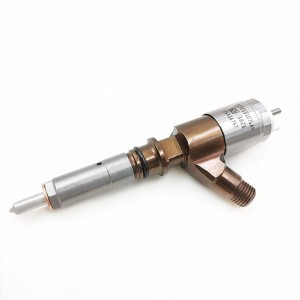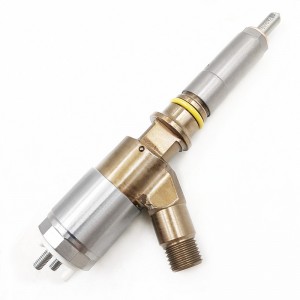New High Quality Diesel Injector 359-4060 20R-1309 359-7434 20R-1304 For CAT C15E
Products Description
| Reference. Codes | C15E |
| Application | C15E |
| MOQ | 4PCS |
| Certification | ISO9001 |
| Place of Origin | China |
| Packaging | Neutral packing |
| Quality Control | 100% tested before shipment |
| Lead time | 7~10 working days |
| Payment | T/T, L/C, Paypal, Western Union, MoneyGram or as your requirement |
How does the multiple injection strategy optimize injector flow characteristics?
The multiple injection strategy divides an injection cycle into multiple stages, accurately controls the injection timing, injection amount and injection rate of each stage, so that the fuel can be more accurately mixed with the air and burned under different engine conditions, thereby optimizing the injector flow characteristics, as follows:
Pre-injection: A small amount of fuel is injected before the main injection. This can form a local combustible mixture in the cylinder in advance and partially burn it. On the one hand, it preheats the air in the combustion chamber, reduces the ignition delay period during the main injection, and enables the main injected fuel to ignite and burn more quickly, improving combustion efficiency; on the other hand, the pre-injection consumes part of the oxygen in advance, destroys the "high-pressure oxygen-rich" environment for the generation of nitrogen oxides, reduces the combustion temperature, and reduces the generation of nitrogen oxides (NOx). At the same time, due to the shortened ignition delay period, the pressure rise rate and peak pressure during the main injection will decrease, the engine will work more smoothly and gently, reduce vibration and noise, and also help optimize the injector flow characteristics during the entire injection process, avoiding flow instability caused by factors such as pressure mutations.
Main injection: The main injection is the main stage of fuel injection, which determines the engine's power output and fuel economy. By optimizing the injection timing, injection amount and injection rate of the main injection, the fuel can be fully mixed with the air in the cylinder and burned quickly. Reducing the injection rate at the beginning of the main injection can reduce the amount of oil injected into the cylinder during the ignition delay period, avoid excessive fuel accumulation before ignition, thereby reducing the pressure increase rate at the beginning of combustion and making the combustion more stable. Increasing the injection rate in the middle of the main injection can shorten the injection time and complete the combustion within a more effective crankshaft angle range of the engine, which is conducive to improving output power, reducing fuel consumption and reducing carbon smoke emissions. Rapid fuel cut-off at the end of the main injection can reduce incompletely burned fuel, reduce smoke and hydrocarbon emissions, and also make the flow characteristics of the injector more in line with the combustion requirements of the engine and improve fuel efficiency.
Post-injection: Additional injection after the main injection. Post-injection can inject a small amount of fuel into the cylinder in the late stage of combustion. These fuels can react with incompletely burned carbon soot and other particulate matter to promote the oxidation of particulate matter, thereby reducing carbon soot and particulate matter emissions. In addition, post-injection can also adjust the temperature and atmosphere in the combustion chamber to a certain extent, further optimize the combustion process, and make the flow characteristics of the injector better match the emission requirements of the engine.
In addition, the multiple injection strategy can also accurately adjust the parameters of each injection stage through the electronic control unit (ECU) according to the different working conditions of the engine, such as speed, load, intake volume, etc., to achieve real-time optimization of the injector flow characteristics. For example, under low-load conditions of the engine, the amount of oil in the pre-injection and main injection is appropriately reduced, and the number or amount of oil in the post-injection is increased to reduce emissions and fuel consumption; under high-load conditions, the amount of oil and injection rate of the main injection are increased to provide sufficient power.






















